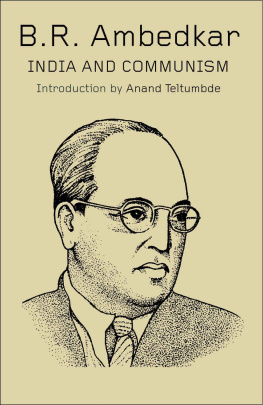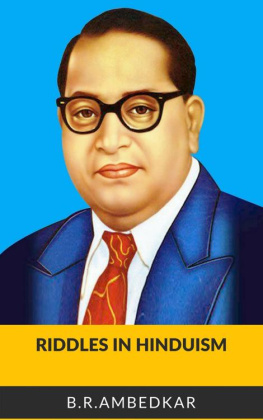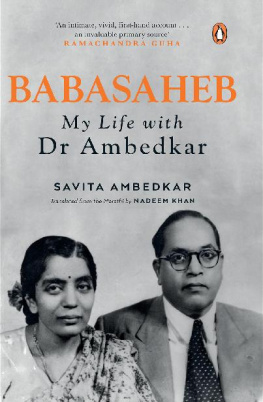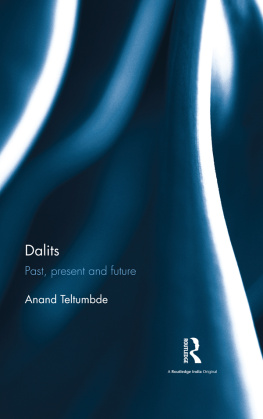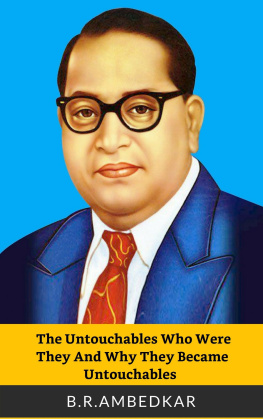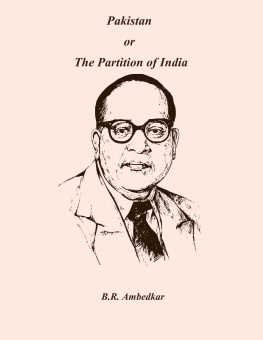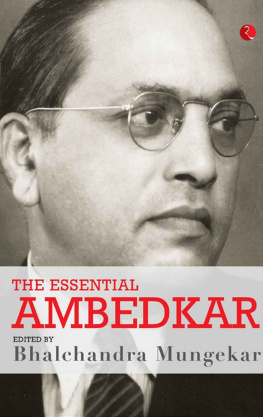If the socialists wish to make socialism a definite reality,
then they must recognise that the problem of social reform is
fundamental and that for them there is no escape from it.
B.R. AMBEDKAR
Annihiliation of Caste, 1936
India and Communism
B.R. Ambedkar
India and Communism
Introduction by Anand Teltumbde
Print edition first published in May 2017
E-book published in August 2017
LeftWord Books
2254/2A Shadi Khampur
New Ranjit Nagar
New Delhi 110008
INDIA
LeftWord Books is the publishing division of
Naya Rasta Publishers Pvt. Ltd.
leftword.com
The text of India and Communism is from Vasant Moon and Hari Narake (eds.),
Dr. Babasaheb Ambedkar: Writings and Speeches, Vol. 3,
New Delhi: Dr. Ambedkar Foundation, 2014.
Introduction Anand Teltumbde, 2017
This collection LeftWord Books, 2017
CONTENTS
Amongst his papers, Dr. B.R. Ambedkar (1891-1956) left behind a note on a book he wished to write entitled India and Communism. Ambedkar had produced a table of contents for this book:
Part I. The Pre-requisites of Communism
Chapter 1 The Birthplace of Communism
Chapter 2 Communism & Democracy
Chapter 3 Communism & Social Order
Part II. India and the Pre-requisites of Communism
Chapter 4 The Hindu Social Order
Chapter 5 The Basis of the Hindu Social Order
Chapter 6 Impediments to Communism arising from the Social Order
Part III. What Then Shall We Do?
Chapter 1 Marx and the European Social Order
Chapter 2 Manu and the Hindu Social Order
The only sections that he completed or that remained in his papers were two parts of one chapter from the second section. These two parts are from : The Hindu Social Order. A total of sixty-three typed pages from this book were in this folder. Nothing else remains from this outline.
In addition, and in the same file of typed material, Ambedkar had produced an outline for a book entitled Can I be a Hindu? This book was also not completed. One section of this book Symbols of Hinduism was attached to the outline. It seems to flow out of the kind of logic that he had developed in the two parts completed for India and Communism.
It is most likely that these pages were typed in the early 1950s.
The editorial annotations to Ambedkars text in this volume are by the editors of Dr. Babasaheb Ambedkar: Writings and Speeches, Vasant Moon and Hari Narake.
The only way well get freedom for ourselves is to identify ourselves with every oppressed people in the world.
Malcolm X
To those who think Babasaheb Ambedkar (1891-1956) was against Communism or Marxism, this book should serve as another reminder that they are grossly prejudiced. He had an abiding interest in the communist movement and philosophy (Marxism), as one focused on the emancipation of the downtrodden. This is evident right from the beginning of his public life to almost his last days when he delivered a speech comparing Karl Marx with Buddha, the progenitor of the religion he had converted to barely less than two months ago. However, it is also true that he had serious reservations about accepting certain theoretical postulations of Marxism, which perhaps prevented him from taking a deeper interest in Marxism. Therefore, he remained searching for a better method (a body of thought) that would overcome the purported limitations of Marxism and still reach the end result the latter promised. Certainly, he saw that method in Buddhism.
Vested interests amongst the Dalits, however, pitched Ambedkar firmly as the enemy of the communists. By doing this, they threw him into the camp of the reactionaries and the exploiters. They stretched this antipathy between Ambedkar and communists to such an extent that they would discard anything even remotely associated with Marxism. The fundamental category of class, through which Ambedkar viewed human society, albeit not with the same conception as Marx and Engels did, has therefore been a complete taboo for them. Paradoxically, they do not object to the usage of castes which Ambedkar wanted to annihilate.
This obsession of the educated middle class of Dalits against Marxism has reached farcical levels. Ambedkar had hoped that they would provide role models for the community and represent their interests in political society. But they utterly failed to meet his expectations. They are solely responsible for the paradoxical degeneration of the Dalit movement today when Ambedkars declared enemy Brahmanism and Capitalism are seen as the friends of Dalits, while the Marxists identified with the worlds toiling masses become their sworn foes.
The entire post-Ambedkar Dalit movement reflects the singular obsession to treat Marxists as the enemy. This has allowed Dalit leaders to remain ensconced in the ruling circles, enjoying the perks and privileges while still calling themselves Ambedkarites. Anyone who would speak of the material concerns of the Dalits would be castigated by them as communists and maligned as anti-Ambedkar. Evidence for this is visible in the very first split of the Republican Party of India (RPI), formed in 1957 the year after Ambedkars death. The RPI split into durust (correct) and nadurust (incorrect) factions just within a year of its formation. The B.C. Kamble faction that split the party called itself a durust RPI and called the rest of the party, led by Dadasaheb Gaikwad, as nadurust RPI. Kambles faction argued that since Ambedkar had given the Constitution, the Dalit struggle must be conceived within the constitutional framework. Anarchic methods like satyagrahas or agitations were not the Ambedkarite path. He justified his separation from the Gaikwad-led RPI on grounds familiar to us today: he accused it of being under the influence of the Communists as it spoke of the material deprivation of Dalits. Gaikwad, on the other hand, saw the importance of land to the emancipation of the Dalits and wanted to launch an agitation for land redistribution.
Both Kamble and Gaikwad took support from Ambedkars statements. Kamble used Ambedkars exhortation to the Dalits, made in the euphoria over the Constitution, that they should use only constitutional means to win demands and shun agitational methods. Gaikwad, on the other hand, used Ambedkars lament expressed three years later to his party workers. When the Marathwada unit of the Scheduled Castes Federation (SCF) led by B.S. Waghmare visited Ambedkar in Delhi in 1953, he told them that whatever he had done had only benefitted a small section of the urban Dalits and he couldnt do much for the rural Dalits. He asked them whether they could take up struggle for land to the landless. In compliance with his advice, three land satyagrahas took place. The first one happened in his life time itself. It was carried out by the same SCF unit in 1953 in Marathwada under the leadership of B.S. Waghmare in which 1,700 people went to jail. The second satyagraha happened in the Khandesh-Marathwada belt in 1959 under the leadership of Gaikwad in which many communists and socialists went to jail along with the Dalits. The last one was the countrywide satyagraha that took place in 1964-65, led by Gaikwad, in which hundreds of people courted arrest every day over a month. The sheer scale of this satyagraha scared the ruling classes to their bones.

